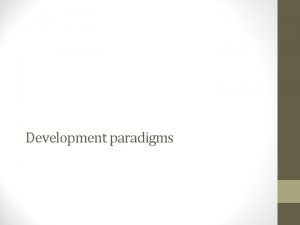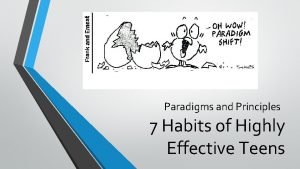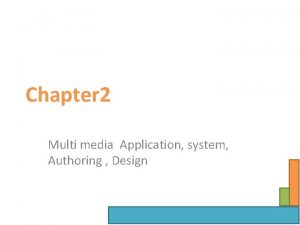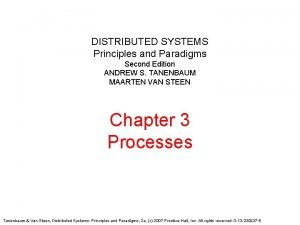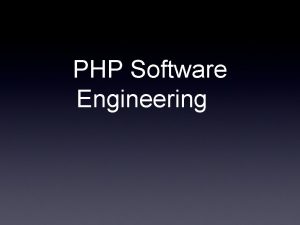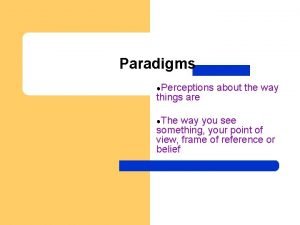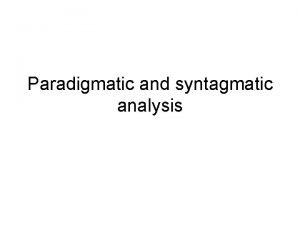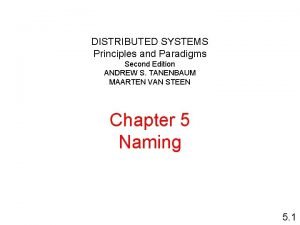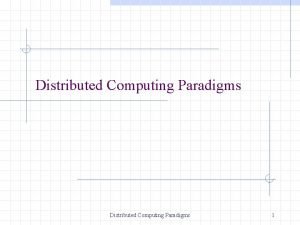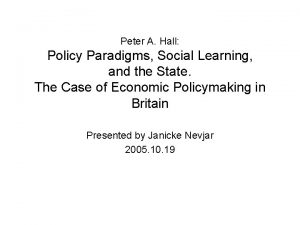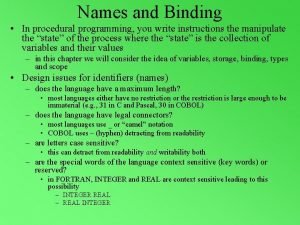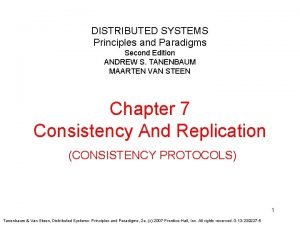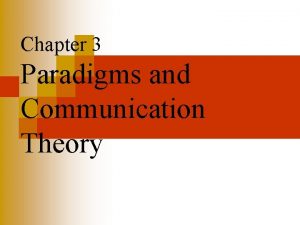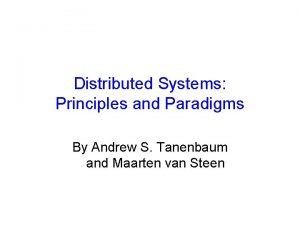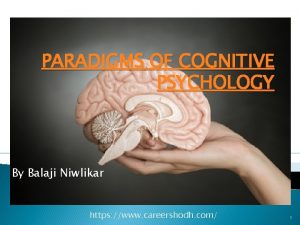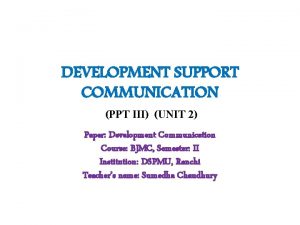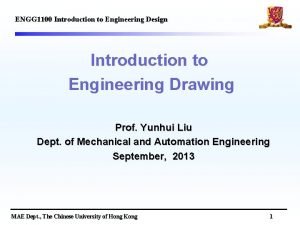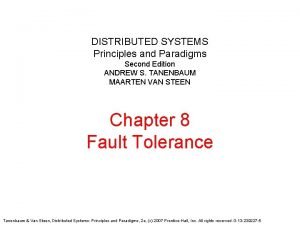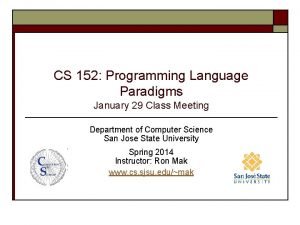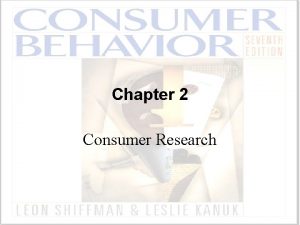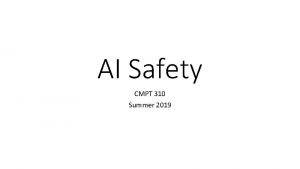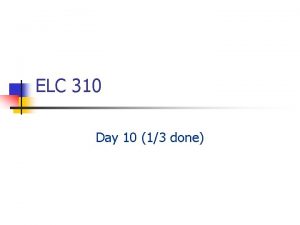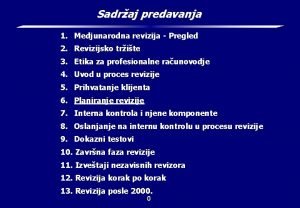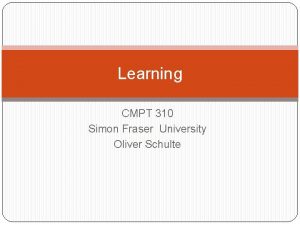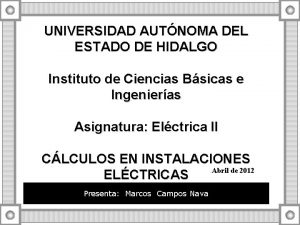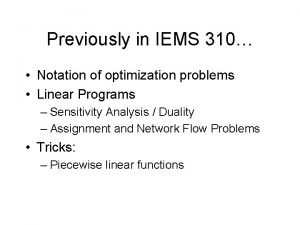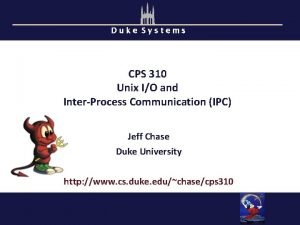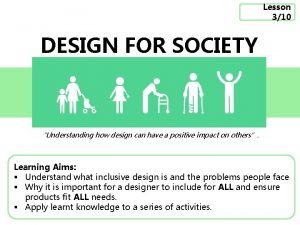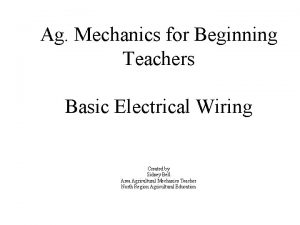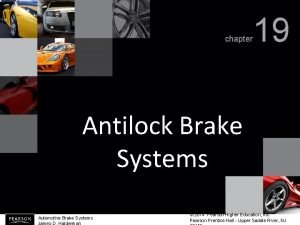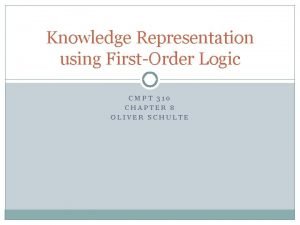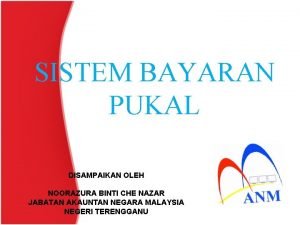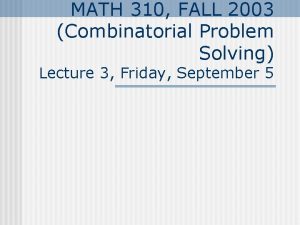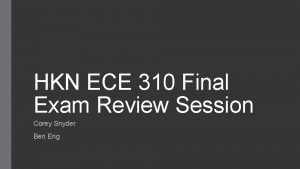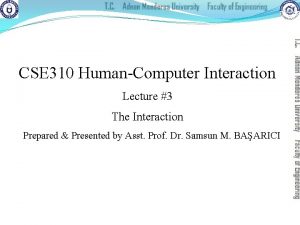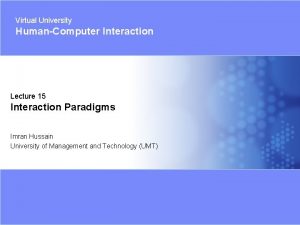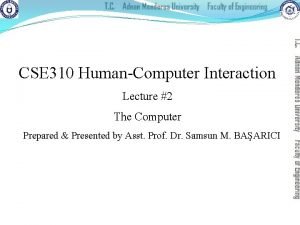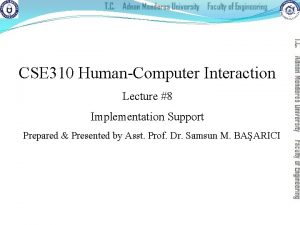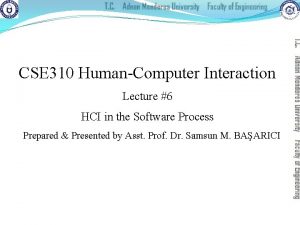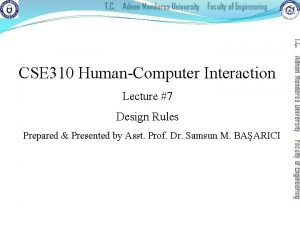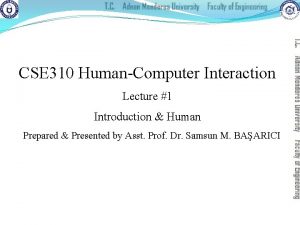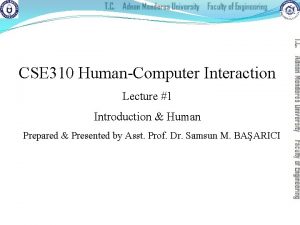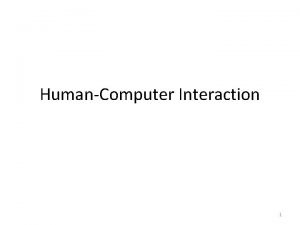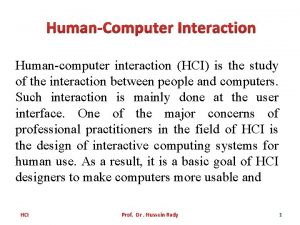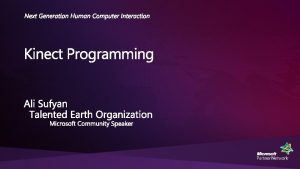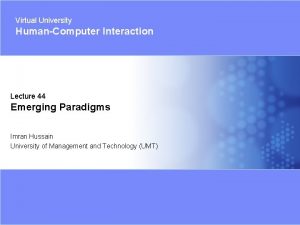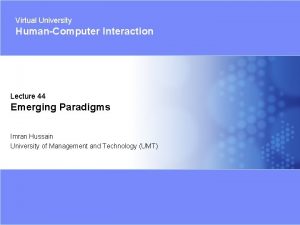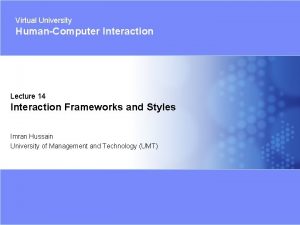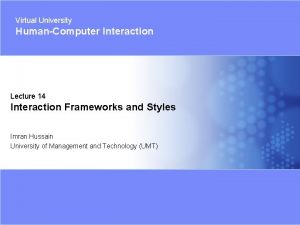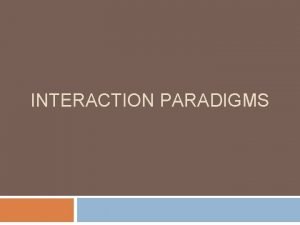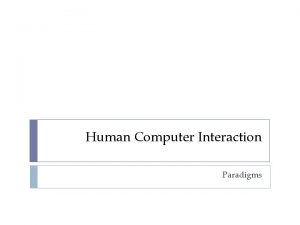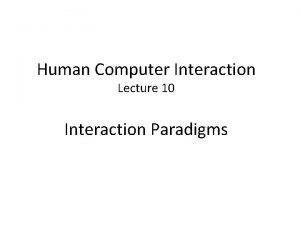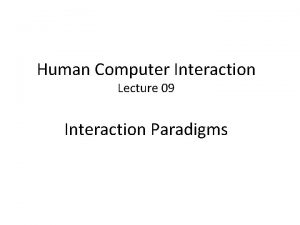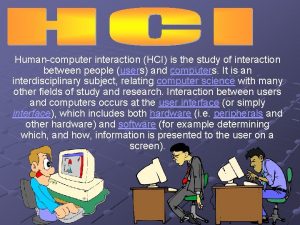CSE 310 HumanComputer Interaction Lecture 4 The Paradigms














































- Slides: 46

CSE 310 Human-Computer Interaction Lecture #4 The Paradigms Prepared & Presented by Asst. Prof. Dr. Samsun M. BAŞARICI

Learning Objectives § Understand the paradigms of interaction in historical context § Appreciate the study of paradigms for interaction design § Know some key person and events in the context of interaction from the point-of-view of paradigms

why study paradigms Concerns �how can an interactive system be developed to ensure its usability? �how can the usability of an interactive system be demonstrated or measured? History of interactive system design provides paradigms for usable designs

What are Paradigms § Predominant theoretical frameworks or scientific world views � e. g. , Aristotelian, Newtonian, Einsteinian (relativistic) paradigms in physics § Understanding HCI history is largely about understanding a series of paradigm shifts � Not all listed here are necessarily “paradigm” shifts, but are at least candidates � History will judge which are true shifts

Paradigms of interaction New computing technologies arrive, creating a new perception of the human—computer relationship. We can trace some of these shifts in the history of interactive technologies.

The initial paradigm �Batch processing Impersonal computing

Example Paradigm Shifts �Batch processing �Time-sharing Interactive computing

Example Paradigm Shifts (cont. ) �Batch processing �Timesharing �Networking @#$% ! ? ? ? Community computing

Example Paradigm Shifts (cont. ) �Batch processing �Timesharing �Networking �Graphical displays C…P… filename dot star… or was it R…M? Move this file here, and copy this to there. % foo. bar ABORT dumby!!! Direct manipulation

Example Paradigm Shifts (cont. ) �Batch processing �Timesharing �Networking �Graphical display �Microprocessor Personal computing

Example Paradigm Shifts (cont. ) �Batch processing �Timesharing �Networking �Graphical display �Microprocessor �WWW Global information

Example Paradigm Shifts (cont. ) • • Batch processing Timesharing Networking Graphical display Microprocessor WWW Ubiquitous Computing � A symbiosis of physical and electronic worlds in service of everyday activities.

Time-sharing § 1940 s and 1950 s – explosive technological growth § 1960 s – need to channel the power § J. C. R. Licklider at ARPA § single computer supporting multiple users

Video Display Units § more suitable medium than paper § 1962 – Sutherland's Sketchpad § computers for visualizing and manipulating data § one person's contribution could drastically change the history of computing

Programming toolkits § Engelbart at Stanford Research Institute § 1963 – augmenting man's intellect § 1968 NLS/Augment system demonstration § the right programming toolkit provides building blocks to producing complex interactive systems

Personal computing § 1970 s – Papert's LOGO language for simple graphics programming by children § A system is more powerful as it becomes easier to user § Future of computing in small, powerful machines dedicated to the individual § Kay at Xerox PARC – the Dynabook as the ultimate personal computer

Window systems and the WIMP interface § humans can pursue more than one task at a time § windows used for dialogue partitioning, to “change the topic” § 1981 – Xerox Star first commercial windowing system § windows, icons, menus and pointers now familiar interaction mechanisms

Metaphor § relating computing to other real-world activity is effective teaching technique � LOGO's turtle dragging its tail � file management on an office desktop � word processing as typing � financial analysis on spreadsheets � virtual reality – user inside the metaphor § Problems � some tasks do not fit into a given metaphor � cultural bias

Direct manipulation § 1982 – Shneiderman describes appeal of graphically-based interaction � visibility of objects � incremental action and rapid feedback � reversibility encourages exploration � syntactic correctness of all actions � replace language with action § 1984 – Apple Macintosh § the model-world metaphor § What You See Is What You Get (WYSIWYG)

Language versus Action § § § actions do not always speak louder than words! DM – interface replaces underlying system language paradigm interface as mediator interface acts as intelligent agent programming by example is both action and language

Hypertext § 1945 – Vannevar Bush and the memex § key to success in managing explosion of information § mid 1960 s – Nelson describes hypertext as non-linear browsing structure § hypermedia and multimedia § Nelson's Xanadu project still a dream today

Multimodality § a mode is a human communication channel § emphasis on simultaneous use of multiple channels for input and output

Computer Supported Cooperative Work (CSCW) § CSCW removes bias of single user / single computer system § Can no longer neglect the social aspects § Electronic mail is most prominent success

The World Wide Web § Hypertext, as originally realized, was a closed system § Simple, universal protocols (e. g. HTTP) and mark-up languages (e. g. HTML) made publishing and accessing easy § Critical mass of users lead to a complete transformation of our information economy.

Agent-based Interfaces § Original interfaces � Commands given to computer � Language-based § Direct Manipulation/WIMP � Commands performed on “world” representation � Action based § Agents - return to language by instilling proactivity and “intelligence” in command processor � Avatars, natural language processing

Ubiquitous Computing “The most profound technologies are those that disappear. ” Mark Weiser, 1991 Late 1980’s: computer was very apparent How to make it disappear? � Shrink and embed/distribute it in the physical world � Design interactions that don’t demand our intention

Sensor-based and Context-aware Interaction § Humans are good at recognizing the “context” of a situation and reacting appropriately § Automatically sensing physical phenomena (e. g. , light, temp, location, identity) becoming easier § How can we go from sensed physical measures to interactions that behave as if made “aware” of the surroundings?

chapter 4 Paradigms (additional materials)

Beginnings – Computing in 1945 § Harvard Mark I � Picture from http: //piano. dsi. uminho. pt/museuv/indexmark. htm § 55 feet long, 8 feet high, 5 tons

Context - Computing in 1945 § Ballistics calculations § Physical switches (before microprocessor) § Paper tape § Simple arithmetic & fixed calculations (before programs) § 3 seconds to multiply Picture from http: //www. gmcc. ab. ca/~supy/

Batch Processing �Computer had one task, performed sequentially �No “interaction” between operator and computer after starting the run �Punch cards, tapes for input �Serial operations

People § Who are the people associated with various interactive paradigm shifts?

Other Resources § Howard Rheingold – Tools for Thought �History of interactive breakthroughs �On-line at http: //www. rheingold. com/texts/tft/

Innovator: Vannevar Bush � “As We May Think” - 1945 Atlantic Monthly � “…publication has been extended far beyond our present ability to make real use of the record. ” � Postulated Memex device � Stores all records/articles/communications � Items retrieved by indexing, keywords, cross references (now called hyperlinks) � (Envisioned as microfilm, not computer) � Interactive and nonlinear components are key � http: //www. theatlantic. com/unbound/flashbks/computer/bushf. htm

More About Vannevar Bush § Name rhymes with "Beaver" § Faculty member MIT § Coordinated WWII effort scientists § Social contract for science � federal government funds universities � universities do basic research � research helps economy & national defense with 6000 US

Innovator: J. R. Licklider � 1960 - Postulated “man-computer symbiosis” �Couple human brains and computing machines tightly to revolutionize information handling

Innovator: Ivan Sutherland § Sketch. Pad - 1963 Ph. D thesis at MIT �Hierarchy - pictures & subpictures �Master picture with instances (ie, OOP) �Constraints �Icons �Copying �Light pen input device �Recursive operations

Innovator: Douglas Englebart § Landmark system/demo: �hierarchical hypertext, multimedia, mouse, high-res display, windows, shared files, electronic messaging, CSCW, teleconferencing, . . . Inventor of mouse

About Doug Engelbart § Graduate of Berkeley (EE '55) � "bi-stable gaseous plasma digital devices" § Stanford Research Institute (SRI) � Augmentation Research Center § 1962 Paper "Conceptual Model for Intellect" Augmenting Human � Complexity of problems increasing � Need better ways of solving problems Picture of Engelbart from bootstrap. org

Innovator: Alan Kay � Dynabook - Notebook sized computer loaded with multimedia and can store everything � @PARC � � � Personal computing Desktop interface Overlapping windows

Innovator: Ben Shneiderman § Coins and explores notion of direct manipulation of interface § Long-time Director of HCI Lab at Maryland

Innovator: Ted Nelson § Computers can help people, not just business § Coined term “hypertext”

Innovator: Nicholas Negroponte § MIT Architecture Machine Group �’ 69 -’ 80 s - prior to Media Lab § Ideas �wall-sized displays, video disks, AI in interfaces (agents), speech recognition, multimedia with hypertext �Put That There (Video)

Innovator: Mark Weiser § Introduced notion of Ubiquitous Computing and Calm Technology �It’s everywhere, but recedes quietly into background § CTO of Xerox PARC

Next Lecture Interaction Design Basics

References § Alan Dix, Janet Finlay, Gregory D. Abowd, Russell Beale, “Human-Computer Interaction, 3 rd Edition”, Prentice Hall, 2004, ISBN: 0 -13 -046109 -1
 Paradigm in hci
Paradigm in hci 01:640:244 lecture notes - lecture 15: plat, idah, farad
01:640:244 lecture notes - lecture 15: plat, idah, farad Paradigms of development
Paradigms of development Paradigms and principles
Paradigms and principles Designer released multimedia authoring system
Designer released multimedia authoring system Distributed systems principles and paradigms
Distributed systems principles and paradigms Php features and paradigms
Php features and paradigms Enemy centered paradigm
Enemy centered paradigm Syntagms and paradigms
Syntagms and paradigms Distributed systems principles and paradigms
Distributed systems principles and paradigms Quick and dirty evaluation
Quick and dirty evaluation Is a paradigm of distributed computing to provide
Is a paradigm of distributed computing to provide Paradigms and principles
Paradigms and principles Peter hall policy paradigms
Peter hall policy paradigms Binding in programming paradigms
Binding in programming paradigms Distributed systems andrew s tanenbaum
Distributed systems andrew s tanenbaum Biological paradigm of psychopathology
Biological paradigm of psychopathology 3 paradigms
3 paradigms Distributed systems principles and paradigms
Distributed systems principles and paradigms 4 paradigms of cognitive psychology
4 paradigms of cognitive psychology Role of media in communication ppt
Role of media in communication ppt Ktu programming paradigms notes
Ktu programming paradigms notes Message ordering paradigms
Message ordering paradigms R programming language paradigms
R programming language paradigms Consumer research paradigms
Consumer research paradigms Cmpt 310 summer 2021
Cmpt 310 summer 2021 Cpsc 310
Cpsc 310 Generation z
Generation z Isa 310
Isa 310 310 huey p long
310 huey p long Cmpt310
Cmpt310 Cps 310
Cps 310 Tablas para conductores conoflam
Tablas para conductores conoflam Iems 310
Iems 310 Actuary roadmap
Actuary roadmap Cps 310
Cps 310 Lesson 310
Lesson 310 Nuclear compaction test
Nuclear compaction test Nec 310 15 b 16
Nec 310 15 b 16 The braking system of a car
The braking system of a car Cmpt 310
Cmpt 310 La 310
La 310 Bank owned aircraft
Bank owned aircraft Bayaran pukal
Bayaran pukal Math 310-1
Math 310-1 Hkn review session
Hkn review session Article 310-16
Article 310-16


